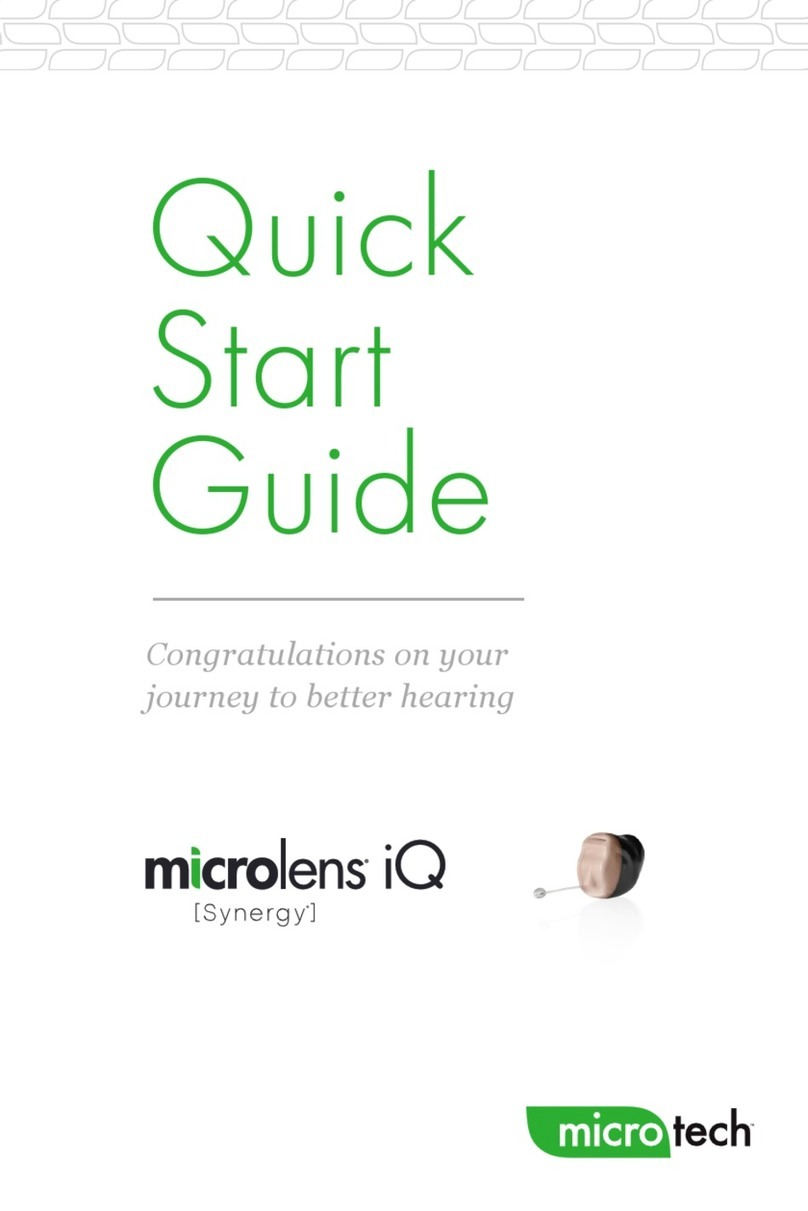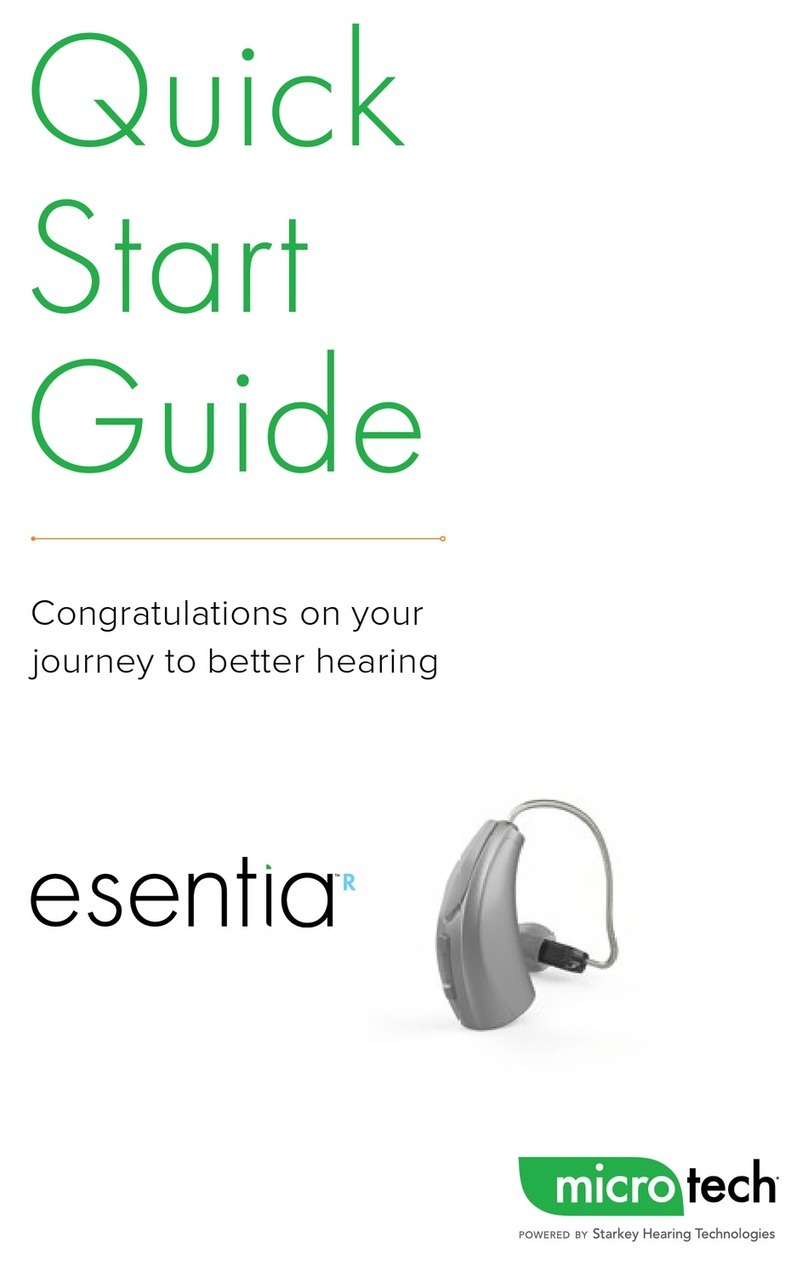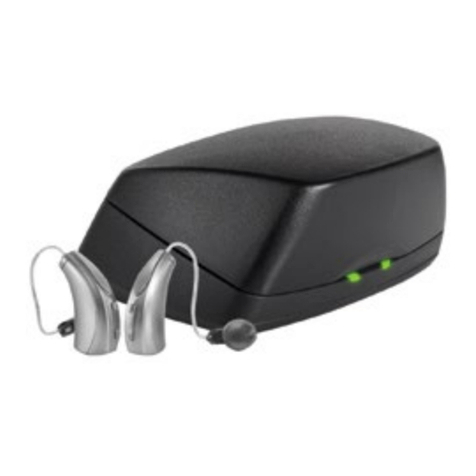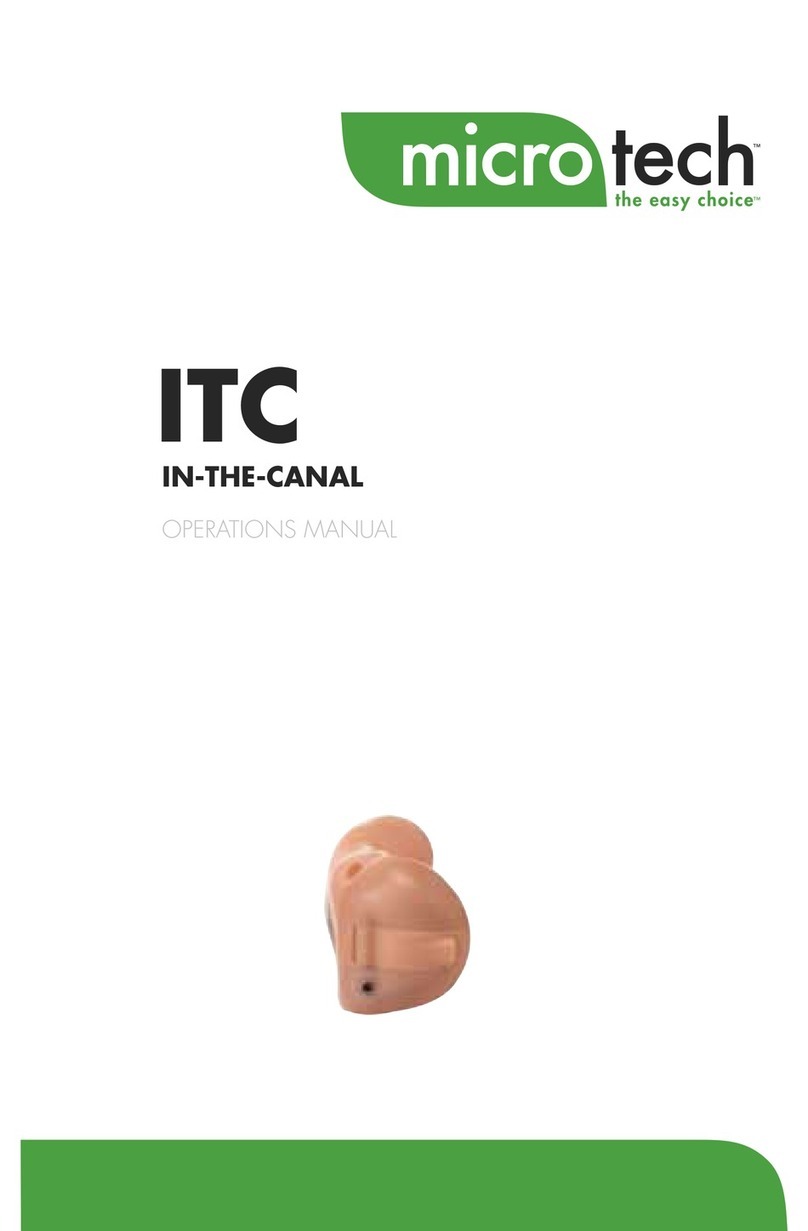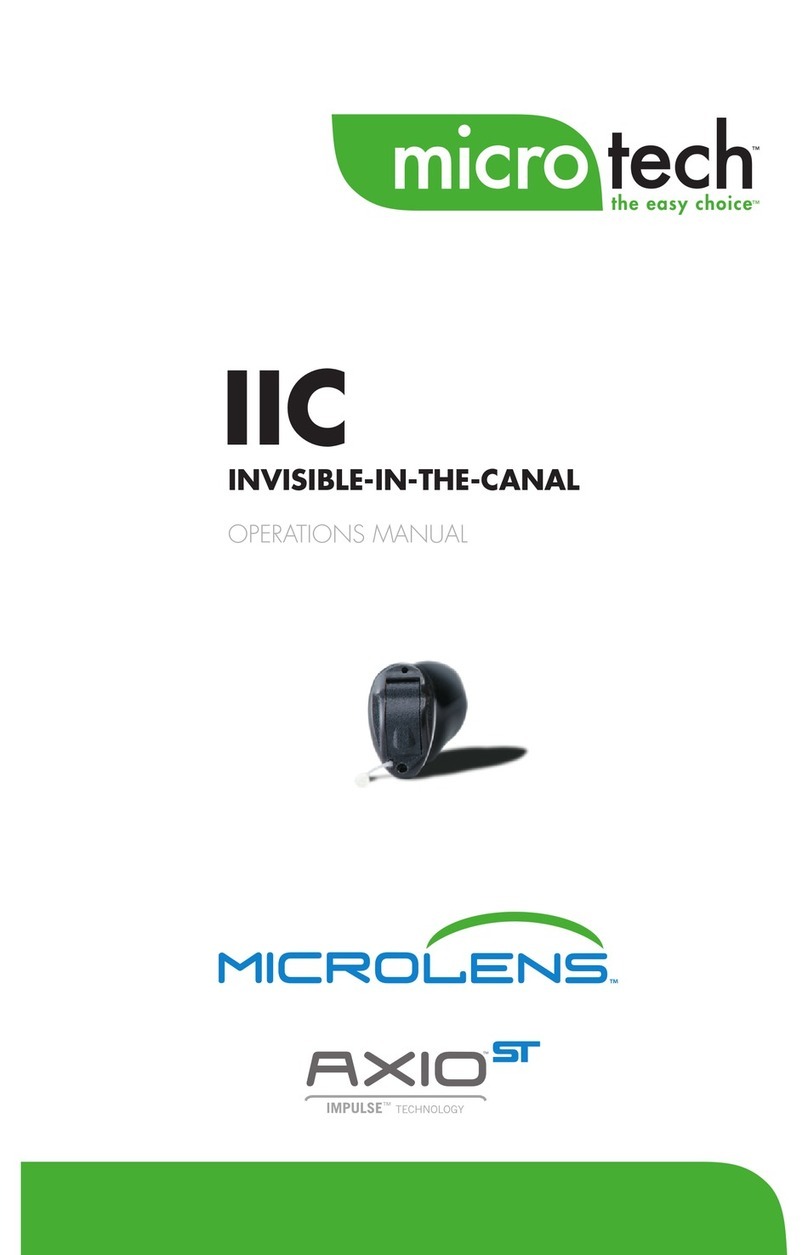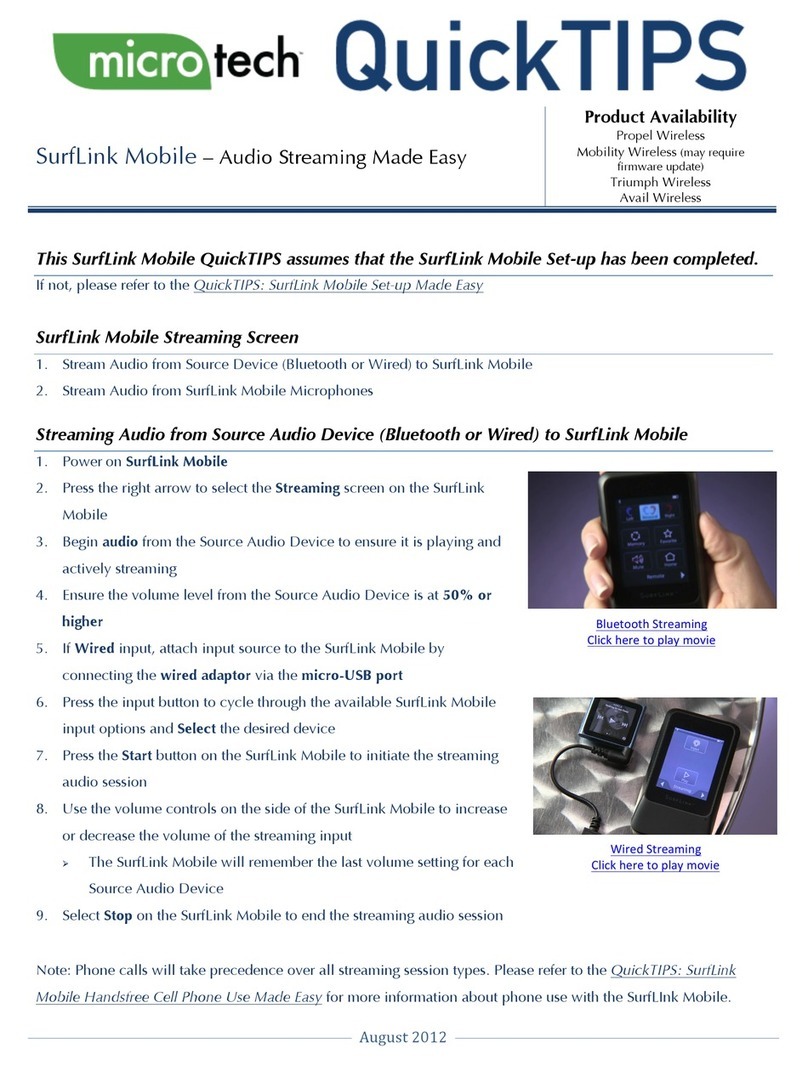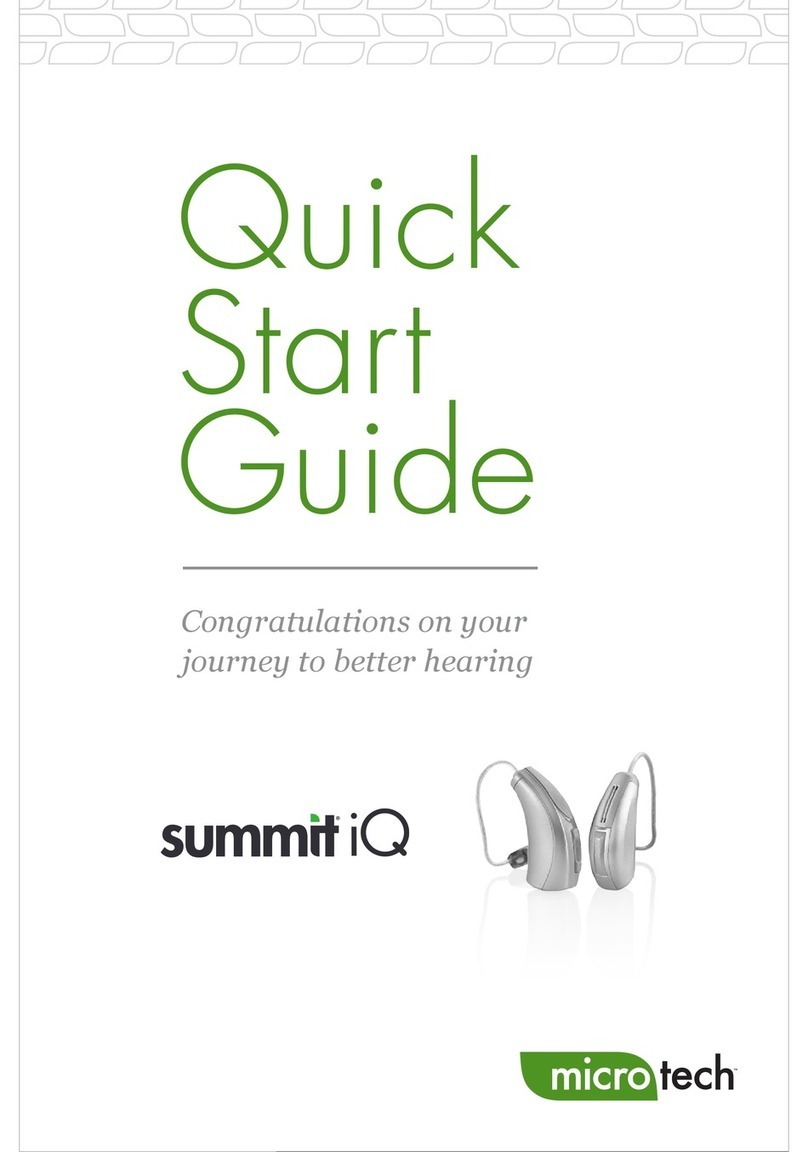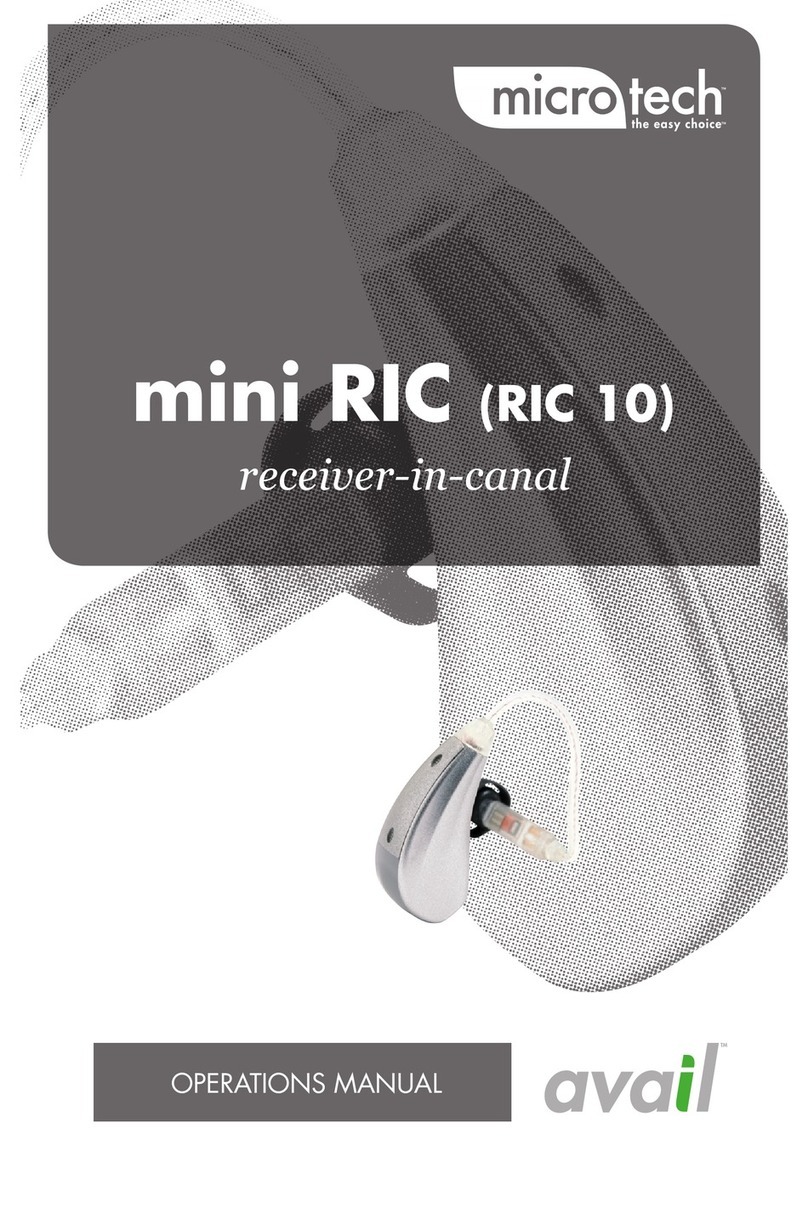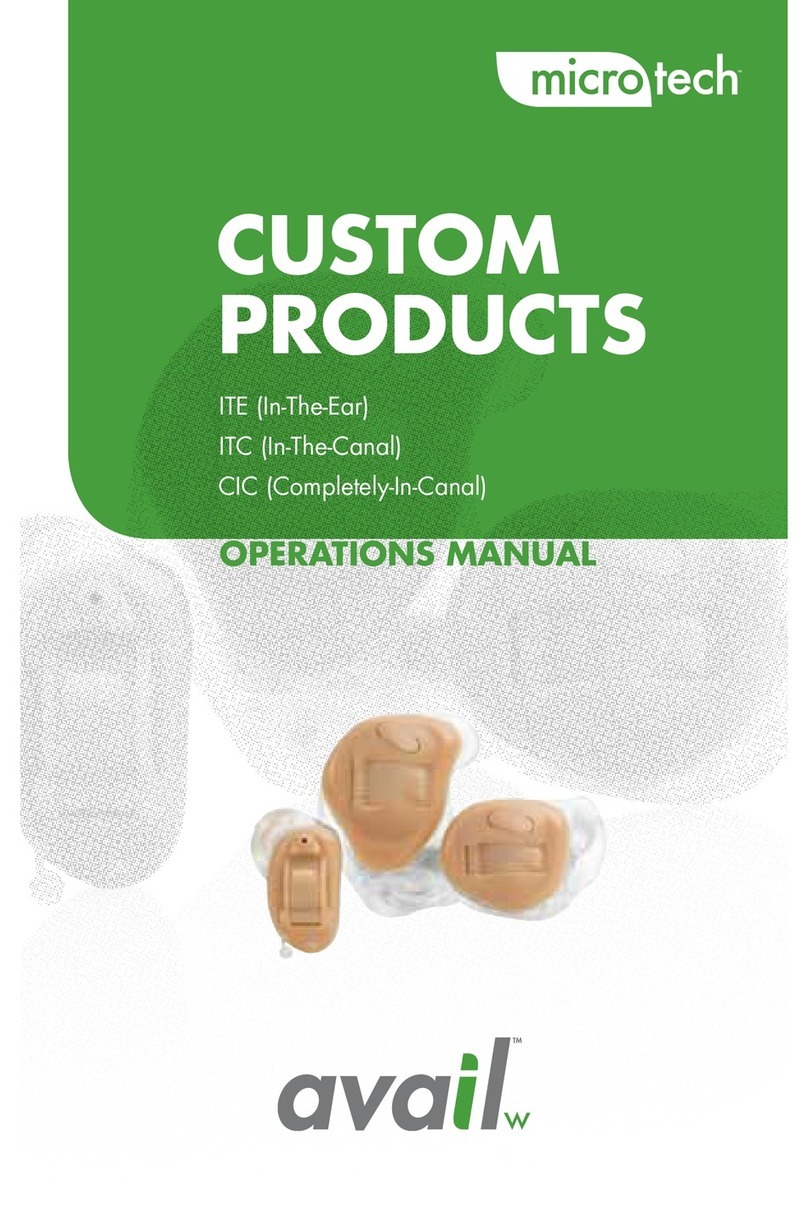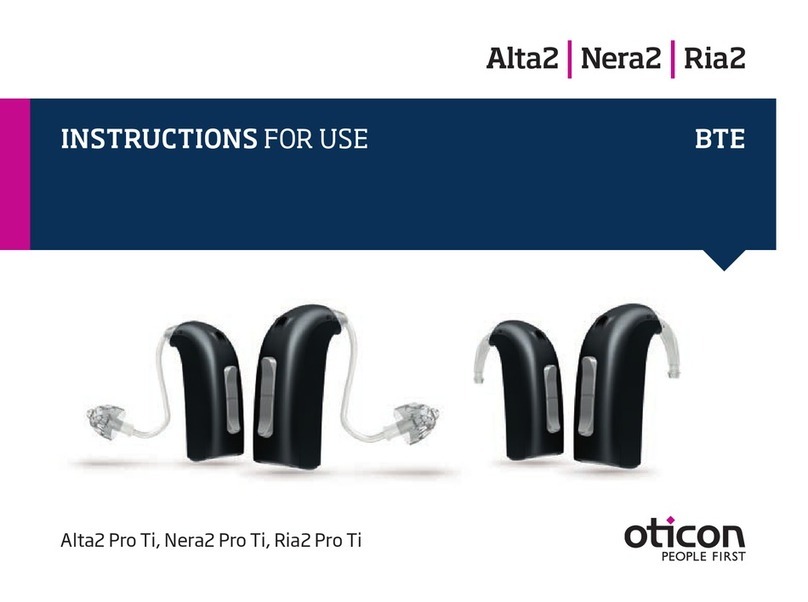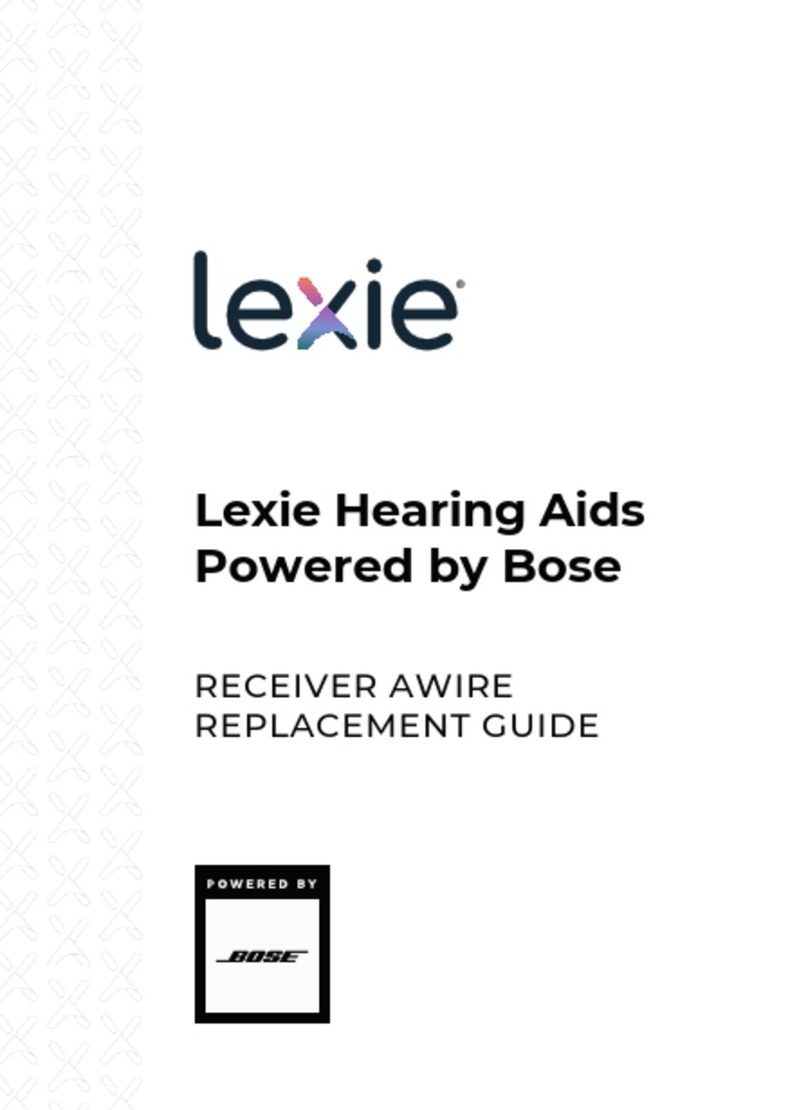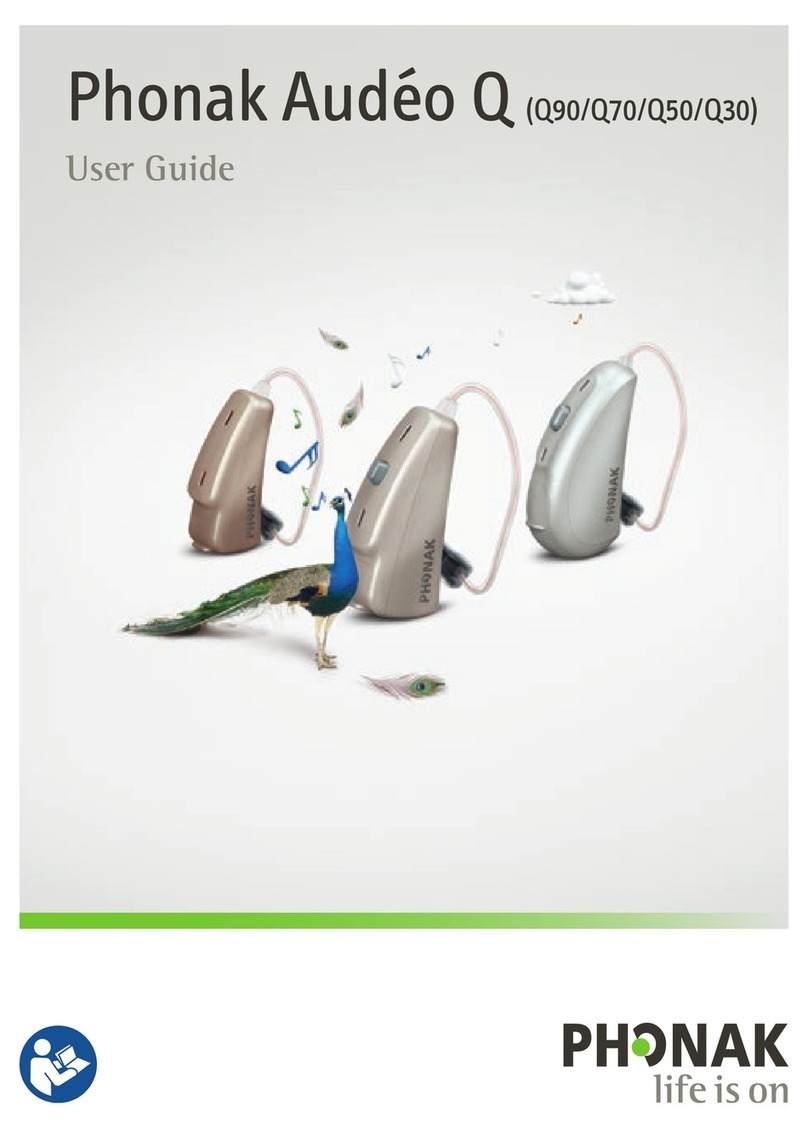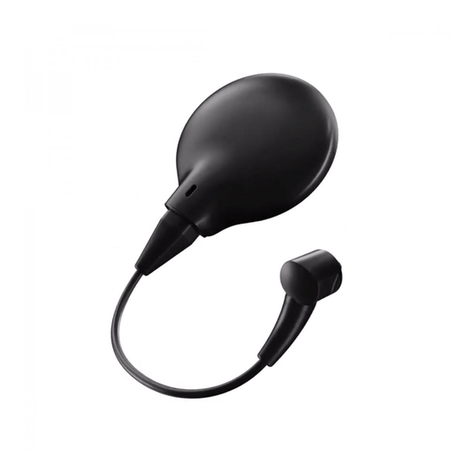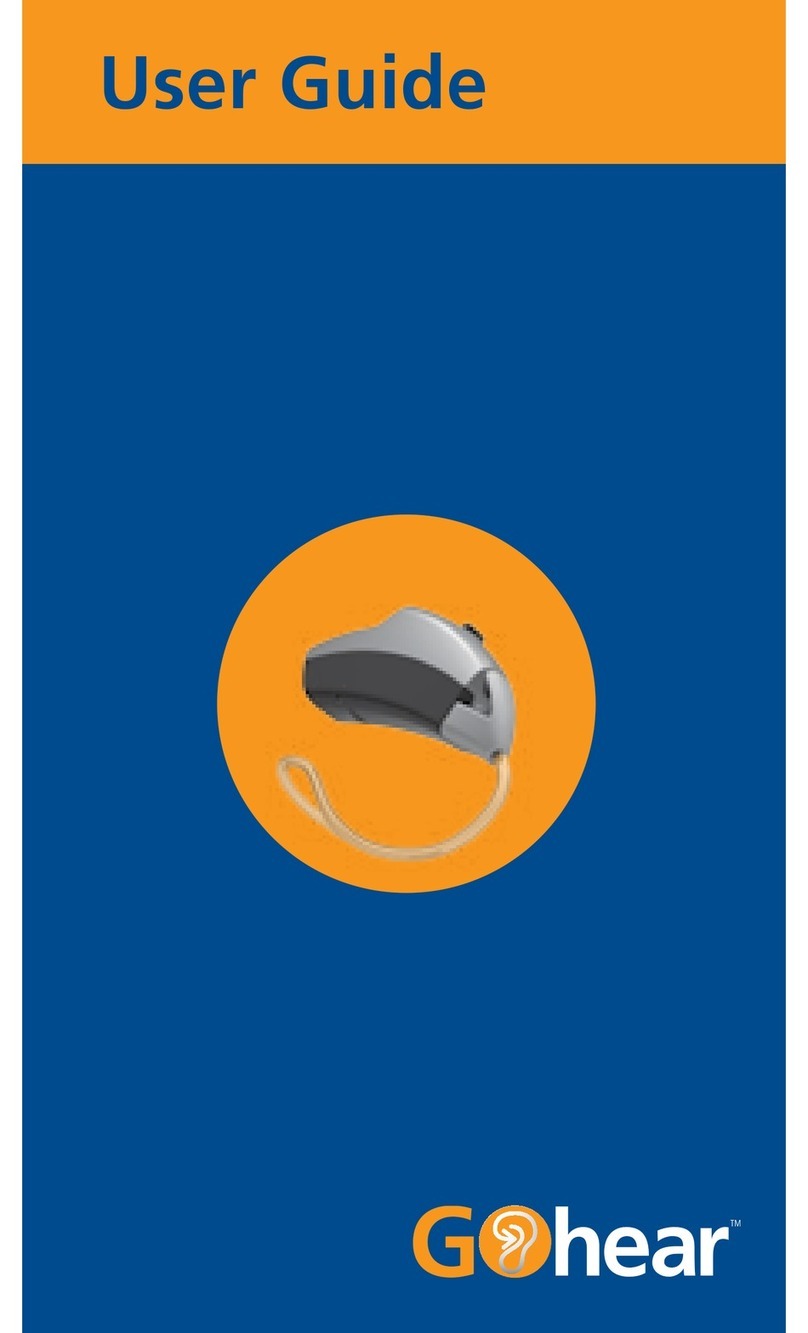Operation
The Touch and Release volume control is configured
to automatically decrease in volume before it
increases. To make sounds louder, touch and release
the control surface. Repeat this motion until you are
at the minimum setting. The next time you touch the
control surface, the volume will increase one step.
Continue to touch and release until you reach the
desiredloudness.NOTE:If10minutesormorehave
passed since the last volume change, the volume will
automatically decrease before it increases.
Section E – Sweep Volume Control and Multimemory
Your control surface is set up to allow changes for
both volume and memory/program. To make sounds
louder, sweep your finger from B to A. To make sounds
softer sweep your finger from A to B. To change memory/
program, touch anywhere on the control surface.
Section D – Multimemory
Your hearing care professional can set up to four
hearing memories for you. These additional programs
are accessed by touching and releasing anywhere on
the control surface.
When you touch the control surface, you may hear a
speech indicator or a series of tones indicating the
device has changed to the next memory/program.
Your hearing instrument has been set up with the
following indicators and memories/programs.
Operation
Program Tone Speech
1 1Tone Normal
2 2 Tones
3 3 Tones
4 4 Tones
Memory/
Program
Section C – Automatic Volume Control
Your hearing instruments have been set to a specific
volume level by your hearing care professional. If
sounds are generally too loud or soft, please contact
your hearing professional for advice and adjustment.
When you touch the control surface, you may hear
a series of tones indicating the device has changed
volume. Your hearing instrument has been set up with
the following indicators:
Your device will always power-on to the optimal,
programmed volume setting determined by your
hearing care professional. Depending on how your
volume control is set, you may have up to five
steps. The minimum and maximum steps will have
an additional tone following the beeps.
Step Tone
Up two steps from programmed gain Five beeps
Up one step from programmed gain Four beeps
Programmed gain Three beeps
Down one step from programmed gain Two beeps
Down two steps from programmed gain One beep

